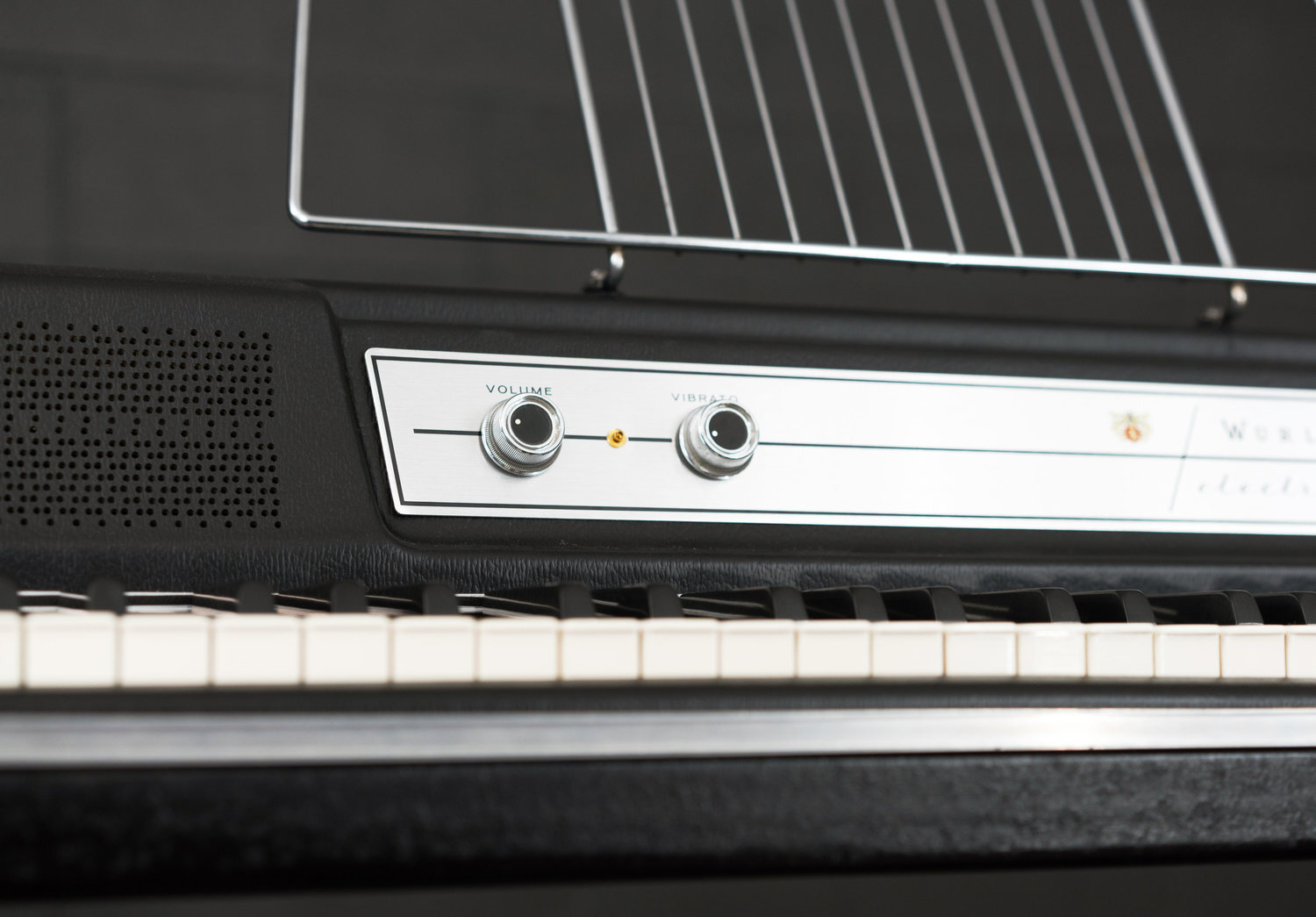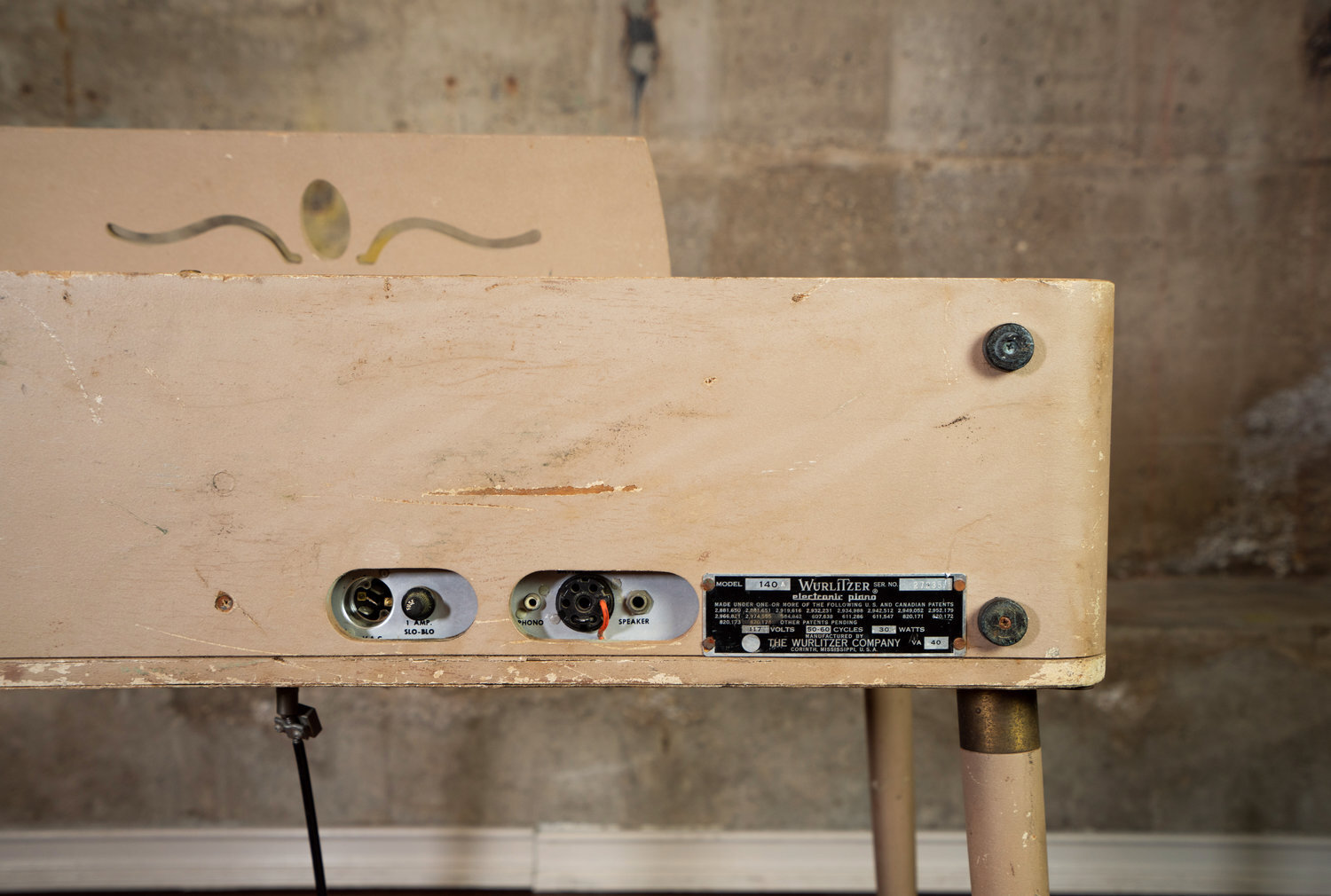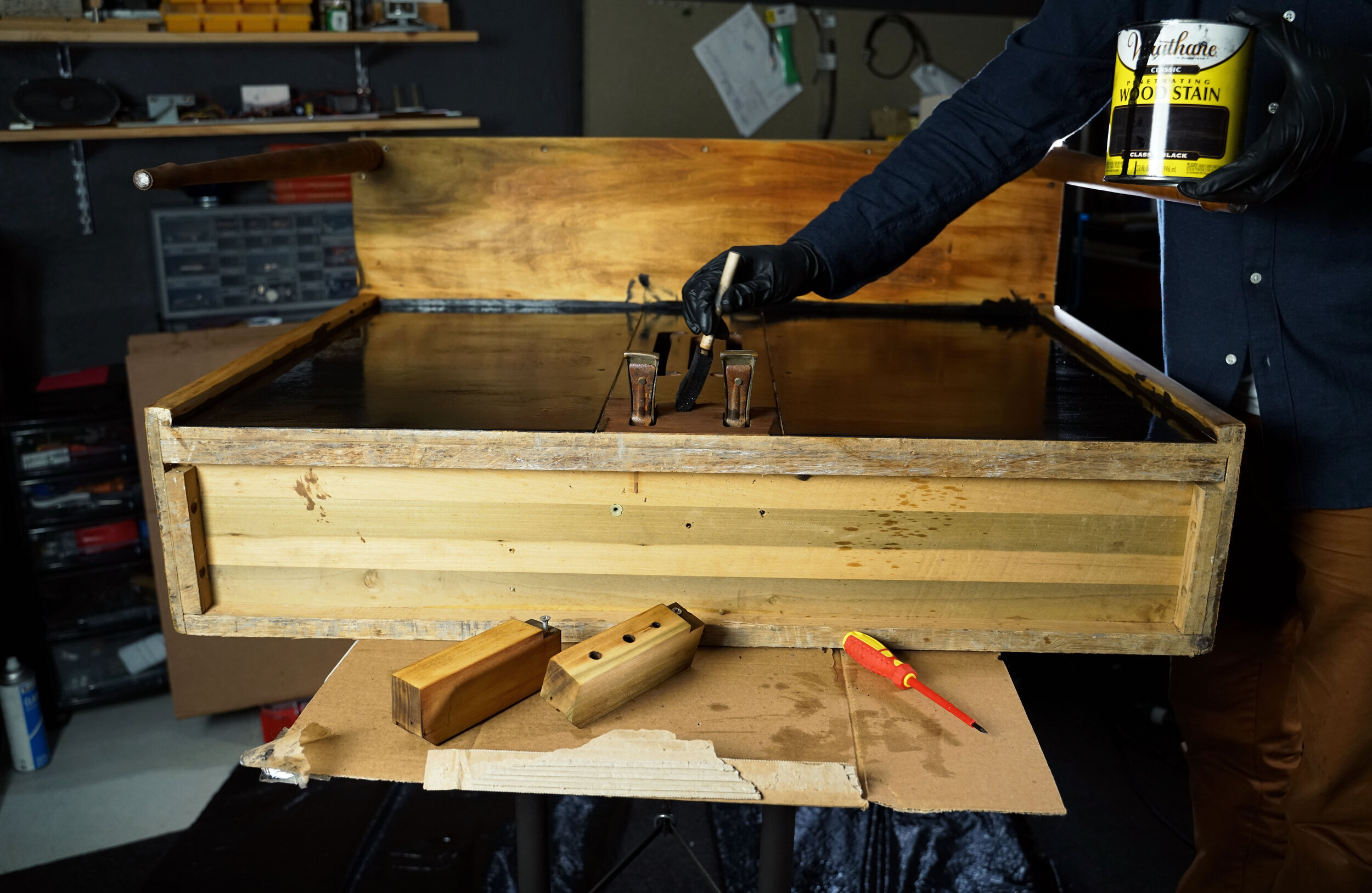How to Replace Wurlitzer 200 or 200a Metal Feet
Early in a restoration, believe it or not all the rust will come off of both the legs and the feet, but only the chrome legs will remain shiny. The feet are mostly eaten through and are not chrome-plated, so they won’t match the legs. Also, the very bottom is now very rough and could damage floors.
If you have just scored a vintage Wurlitzer 200 or 200A, or perhaps you are just pulling one out of storage, you may find that the metal hardware has rusted or tarnished. Depending on where the Wurlitzer was stored, the chrome on the legs might have pitting and/or rust, and it’s more than likely the feet have rust as well. In this article, we’ll talk about how to replace the Wurlitzer feet. New metal Wurlitzer feet are available in our shop and will be a closer match to the vintage chrome legs than the old dull feet. And your studio floors will thank you!
New feet are a closer match to vintage but freshly de-rusted chrome legs.
The feet on a Wurlitzer’s chrome legs usually sustain the most damage. Perhaps the Wurlitzer was stored in a garage (and, if this garage was not climate controlled, this is a big no-no) or a basement. Considering that the feet are in contact with the floor, they are the most prone to moisture damage. An occasional leak, minor flooding, a spill, or maybe they were subject to a clean freak who constantly mopped but always mopped over the feet…for good measure ya know? All of these moisture conditions will cause the feet to rust.
Occassionally we find Wurlitzer legs and feet that are both rusted (almost always the feet a little more so) and we give the entire set a good soaking in de-rusting solution (such as Evapo-Rust). Nine times out of ten the legs will make a full recovery, with most of the chrome still looking fabulous. The feet, however, are not chrome-plated and after a de-rusting only dull old metal remains. I usually don’t mind dull old metal that is newly free of rust, but in this case it is not a match for the chrome legs. It may also not be something you want sliding around your nice floors. (Side note: often the rust is so advanced on feet that they become hazardous, since the metal is now completely eaten through.) Here’s how you can replace your Wurlitzer’s feet.
Remove the Old Feet
The metal feet on your Wurlitzer 200 or 200A are held on by pressure (they are not welded or glued), so they come right off. You can use the following tools:
A hammer
A flat head screwdriver (or other blunt pointed metal tool)
Optionally, a clamp with protective ends (so as to not mar the leg)
In short, the feet come right off. But, since it takes more force than one can do by simply pulling by hand, you will place the screwdriver on the collar of the foot and tap with a hammer. Working your way around the foot helps. It also helps to have the leg firmly held in place while you do this. You can clamp the leg to a good work surface (being careful not to mar the leg with a metal clamp). Or — and I actually find this to work quite well — you can place the leg on a carpeted floor, and step on the leg (while kneeling down). Then, tap away with the screwdriver and hammer.
Pro tip: if the feet are being particularly fussy and not budging, you can spray a little WD40 down the top of the leg (the leg is hollow) through one of the small openings. Allow the WD40 to drip all the way down to the foot’s clasp (which is doing most of the holding) inside of the leg.
Install the new feet
Once you have the old feet off, it is clear sailing from here. The new feet will fit right on the the leg and with a few taps (I like to bang them on by hitting the whole leg on the floor) they are on!
Selecting which foot size
There are two sizes of feet. We highly recommend that you measure your feet, this will be the diameter of the leg at the foot-end. The 200 through early 200A all used the 5/8” feet. The mid-to-late 200A used 3/4” feet. Since it wasn’t uncommon for legs to get swapped over the years, it is a good idea to measure the feet that you are using. When purchasing new Wurlitzer feet in our shop, be sure to select the drop down to choose the correctly sized feet for your Wurlitzer legs.
Further Reading
Browse all of our articles on restoring vintage gear. Or, click on an image below.






